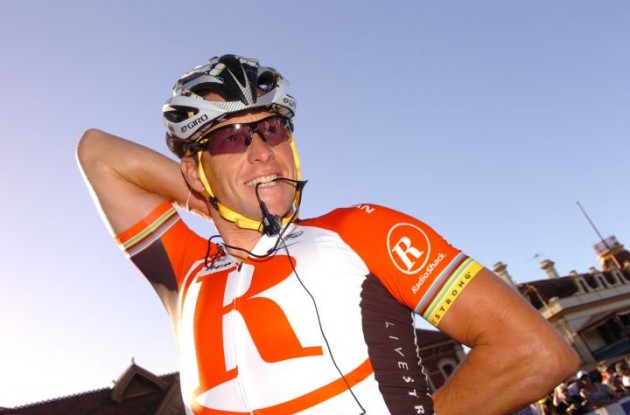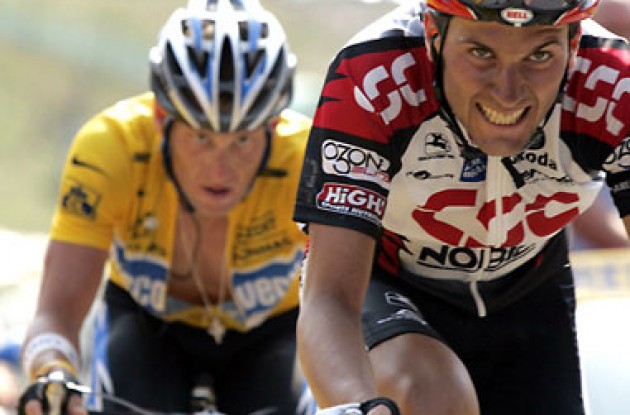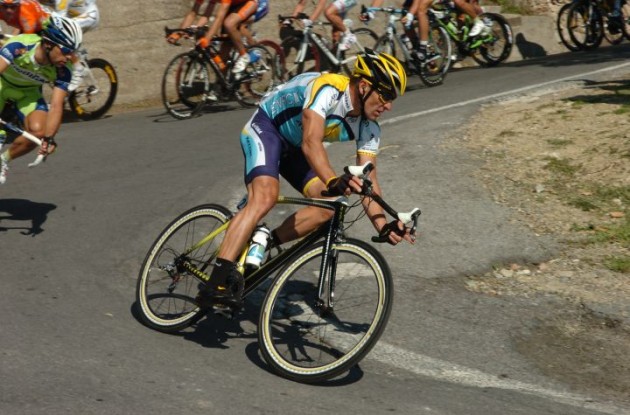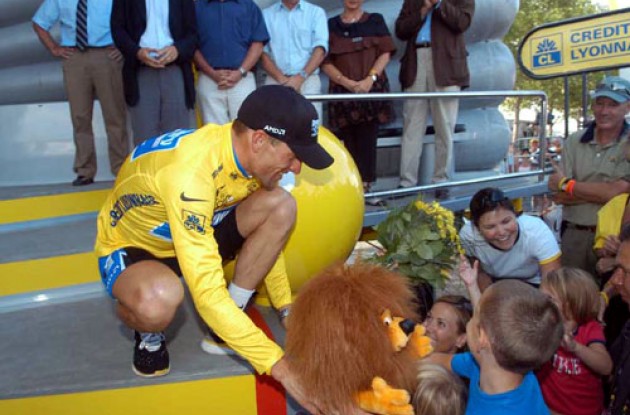Lance Armstrong Defied Odds During Historic Pro Cycling Career
Few athletes, let alone cyclists, have attracted the enormous amount of criticism as Lance Armstrong and responded with such colossal success.
Few athletes, let alone cyclists, have attracted the enormous amount of criticism as Lance Armstrong and responded with such colossal success.
The American, who formally announced his retirement on Wednesday at age 39, defied incredible odds to win cycling's most famous and gruelling event, the Tour de France, a record seven times.
That alone would have been extraordinary enough but the fact his achievements came after he survived cancer that doctors thought would kill him, made his success all the more inspiring while raising questions from his opponents about how he did it.
The Texan was already on his way to reaching the top when he won a stage of the Tour de France then the world road racing title in 1993, aged 21.
He won a handful of races in Europe and the United States and another stage of the Tour de France in 1995 but his world suddenly came crashing down in 1996 when he was diagnosed with testicular cancer that had spread to his brain and lungs.
Doctors gave him less than a 50 percent chance of survival but after undergoing extensive chemotherapy and having the tumours removed, he was declared free of the disease and cleared to resume riding.
In 1999, Armstrong completed a fairytale return that had all the makings of a Hollywood blockbuster when he won the Tour de France for the first time, after the two previous victors, the 1997 champion Jan Ullrich and the 1998 winner Marco Pantani, both missed the race.
Few expected Armstrong would be as dominant once his two main rivals returned to the race but he was, winning the Tour each of the next six seasons, surpassing the previous record of five wins, jointly held by Jacques Anquetil, Eddy Merckx, Bernard Hinault and Miguel Indurain.
But his achievements were often accompanied by accusations of foul play. Although he never failed a doping test, he was persistently dogged by claims his success was aided by performance-enhancing drugs.
Armstrong boasted incredibly strong legs and above normal aerobic capacity for a relatively small man, standing 1.77 metres (5 feet 9-1/2 inches) tall and weighing around 75 kilograms (165 pounds).
But he always maintained he was clean and pointed to the fact he was one of the most tested athletes in any sport as proof of his innocence.
In 2005, after his seventh successive win in the Tour de France, Lance Armstrong announced he was retiring from the sport, but made a comeback in 2009 at the age of 37.
He said that he missed the thrill of competition but was driven by a greater cause and wanted to use his global profile to promote cancer awareness. He is the founder and chairman of his own foundation.
Armstrong finished a creditable third behind his team mate Alberto Contador in the 2009 Tour de France then 23rd last year, after moving to the RadioShack team. He said that would be his last appearance in France and his final race of any sort was at the Tour Down Under in Australia last month.
He had planned to ride in a handful of events in the U.S. this year, but says a troublesome knee prompted him to call it quits altogether.
He said he was retiring for good to focus on his charity work and to spend more time with his five children, three with his former wife Kristin Richard and two with his current partner Anna Hansen.











